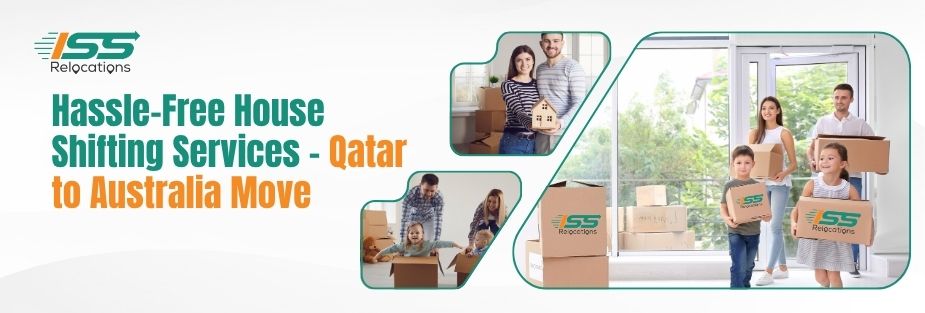
Common misconceptions about transit insurance for moving companies
Relocating to a new place can be an exciting experience, but it also comes with its own set of challenges, including the safe transportation of your belongings. The process of moving can be unpredictable, with unforeseen circumstances like accidents or natural disasters that can damage or destroy your valuables during transit. This is where transit insurance comes into play. Transit insurance is a type of insurance that provides coverage for any loss or damage to your goods while in transit. It is essential for both the moving company and the client to understand the importance of transit insurance to ensure a stress-free and successful move. In this blog post, we will debunk the common misconceptions about transit insurance for moving companies.
Misconception 1: Transit insurance is not necessary
One of the most common misconceptions surrounding transit insurance is that it is not necessary. Some people believe that their belongings will be safe during transit, and therefore, they do not need to purchase transit insurance. However, this is a risky assumption that can lead to significant financial losses.
Transit insurance is necessary because it protects your belongings during transit. Even with the most careful planning and preparation, accidents can still happen during the move. For example, your items could be damaged due to unforeseen circumstances such as bad weather, rough terrain, or human error. In such cases, transit insurance can provide financial protection and peace of mind.
If you do not have transit insurance, you could be held liable for any damages that occur during the move. This means that you would have to pay out of pocket for any repairs or replacements that are needed. Depending on the value of your belongings, this could result in significant financial losses that could have been avoided with transit insurance.
Additionally, some moving companies may require that you have transit insurance before they agree to transport your belongings. Therefore, not having transit insurance could also limit your options when it comes to choosing a moving company.
Overall, not having transit insurance can lead to a stressful and costly situation that can be easily avoided by obtaining transit insurance. It is important to remember that accidents can happen, and it is better to be prepared than to risk losing valuable possessions.
Misconception 2: Transit insurance covers all damages
Another common misconception about transit insurance is that it covers all damages. However, this is not always the case, and it is important to understand the limitations of transit insurance coverage.
Transit insurance typically covers damages that occur during the transportation of your belongings from your old location to your new location. This can include damages that occur due to accidents, theft, fire, or other unforeseen circumstances.
However, it is important to note that transit insurance may not cover damages that occur outside of transportation. For example, if your belongings are damaged while they are being packed or unpacked, this may not be covered by transit insurance. Additionally, transit insurance may not cover damages that occur due to natural disasters or other events that are outside of the control of the moving company.
Transit insurance coverage is typically subject to certain limitations and exclusions. For example, there may be limits on the amount of coverage that is provided for each item, and there may be exclusions for certain types of items, such as jewellery or artwork.
It is important to carefully review the terms and conditions of your transit insurance coverage to understand the limitations and exclusions that apply. This will help you to determine whether you need to purchase additional insurance or take other steps to protect your belongings.
It is important to carefully review and understand the terms and conditions of your transit insurance coverage to ensure that you have adequate protection for your belongings. This can help you to avoid unexpected surprises in the event that damages occur during the move.
Additionally, understanding the limitations and exclusions of transit insurance coverage can help you to determine whether you need to purchase additional insurance or take other steps to protect your belongings. For example, you may need to purchase additional insurance for high-value items or take extra precautions to protect fragile items during the move.
Overall, while transit insurance can provide valuable protection for your belongings during the move, it is important to understand the limitations and exclusions of coverage to ensure that you have adequate protection for your belongings.
Misconception 3: Transit insurance is too expensive
Another common misconception about transit insurance is that it is too expensive, and that it is not worth the additional cost.
Transit insurance costs are typically determined based on the value of the belongings that are being transported, as well as the distance of the move and the level of risk involved. Generally, the more valuable the belongings, the higher the cost of transit insurance.
Additionally, the type of transit insurance coverage that is selected can also impact the cost. For example, a comprehensive coverage plan that provides protection for a wide range of damages may be more expensive than a basic coverage plan that only provides protection for a limited set of damages.
While transit insurance may seem expensive at first glance, it is important to consider the potential cost of damages that could occur during the move. Without transit insurance, the cost of replacing or repairing damaged belongings can quickly add up.
For example, if a valuable piece of artwork is damaged during the move, the cost of repair or replacement could easily exceed the cost of transit insurance. In this case, purchasing transit insurance would be a smart investment to ensure that you are protected from potential losses.
Given the potential cost of damages, it is important to budget for transit insurance as part of your overall moving expenses. This can help you to avoid unexpected expenses and ensure that you have adequate protection for your belongings during the move.
When budgeting for transit insurance, it is important to consider the value of your belongings, the distance of the move, and the level of risk involved. This will help you to select the appropriate type of transit insurance coverage and ensure that you have adequate protection for your belongings.
Overall, while transit insurance may seem expensive at first glance, it is important to consider the potential cost of damages and budget accordingly to ensure that you have adequate protection for your belongings during the move.
Misconception 4: Transit insurance is the responsibility of the moving company
Another common misconception about transit insurance is that it is the sole responsibility of the moving company to obtain and provide coverage for the move.
In reality, it is the responsibility of both the client and the moving company to ensure that adequate transit insurance coverage is in place for the move. While the moving company may offer transit insurance as part of their services, it is ultimately up to the client to determine if the coverage is adequate and to obtain additional coverage if necessary.
Clients can obtain transit insurance coverage through a variety of sources, including their homeowner’s insurance policy or a separate transit insurance policy. It is important to review the terms and conditions of the transit insurance policy carefully to ensure that it provides adequate coverage for the move.
While the client is responsible for obtaining transit insurance coverage, it is still important to review the moving company’s transit insurance policy to understand the level of coverage that is being provided. This can help the client to identify any potential gaps in coverage and to determine if additional coverage is necessary.
Clients should ask the moving company for a copy of their transit insurance policy and review it carefully to ensure that it provides coverage for all of their belongings during the move. It is also important to understand the terms and conditions of the policy, including any exclusions or limitations.
Relying solely on the moving company’s transit insurance policy can be risky, as it may not provide adequate coverage for all of the client’s belongings during the move. In some cases, the moving company’s transit insurance policy may have exclusions or limitations that could leave the client with a gap in coverage.
Additionally, if the moving company’s transit insurance policy does not provide adequate coverage for the move, the client may be left responsible for any damages or losses that occur. This can be a costly mistake and can cause a great deal of stress and frustration during the moving process.
Overall, while the moving company may offer transit insurance as part of their services, it is important for the client to review the policy carefully and to obtain additional coverage if necessary. This can help to ensure that all of the client’s belongings are adequately protected during the move and can provide peace of mind throughout the process.
Misconception 5: Transit insurance is a one-size-fits-all solution
The final common misconception about transit insurance for moving companies is that it is a one-size-fits-all solution, and that all transit insurance policies are the same.
In reality, there are several different types of transit insurance available, and each policy may have different terms, conditions, and limitations. The most common types of transit insurance include:
Basic carrier liability: This is the most basic type of transit insurance and is often included as part of the moving company’s services. It typically provides coverage based on the weight of the item being moved, and may have a limit on the maximum amount of coverage.
Declared value coverage: This type of transit insurance allows the client to declare the value of their belongings and purchase coverage based on that value. It typically has a higher limit on the maximum amount of coverage, but may also have higher premiums.
All-risk coverage: This is the most comprehensive type of transit insurance and provides coverage for all types of damages or losses, unless specifically excluded in the policy. It typically has the highest premiums, but also provides the most comprehensive coverage.
It is important for clients to select the appropriate type of transit insurance for their specific move, based on the value and type of items being moved, as well as the level of risk involved in the move. For example, if the client is moving high-value items such as artwork or antiques, all-risk coverage may be the best option to ensure that these items are adequately protected.
Failing to select the appropriate type of transit insurance can leave the client with inadequate coverage and can result in costly damages or losses during the move. For example, if the client only has basic carrier liability coverage and their high-value items are damaged during the move, they may not receive adequate compensation for these items.
Overall, it is important for clients to understand that transit insurance is not a one-size-fits-all solution, and that there are several different types of coverage available. By selecting the appropriate type of transit insurance for their specific move, clients can ensure that their belongings are adequately protected and can have peace of mind throughout the moving process.
Conclusion
In conclusion, transit insurance is a critical aspect of any move, and it is essential for both the moving company and the client to understand its importance. We have debunked the common misconceptions surrounding transit insurance for moving companies. It is necessary to recognize that transit insurance is necessary to protect your belongings during transit, and not having it can lead to significant financial losses. It is also important to understand that transit insurance coverage has limitations and terms and conditions that need to be thoroughly reviewed to ensure that you are adequately protected.
Furthermore, while some may view transit insurance as an unnecessary expense, the potential costs of damages far outweigh the cost of transit insurance. Additionally, it is the responsibility of the client to obtain transit insurance, and it is crucial to review the moving company’s transit insurance policy to ensure that it meets your specific needs. It is also essential to choose the appropriate type of transit insurance for your move, as not all types of transit insurance are equal.
At ISS Relocations, we understand the importance of transit insurance and the critical role it plays in the relocation process. Our team of professionals can provide guidance on selecting the appropriate type of transit insurance and review the moving company’s transit insurance policy to ensure that it meets your specific needs. We can also provide assistance with the entire relocation process, ensuring that your move is as smooth and stress-free as possible.
We are a relocation company that believes in hassle-free relocations of all your goods and heavy machinery and items when you are moving abroad. Our goal is to make sure that you are completely satisfied with your relocation and that all your belongings are transported safely and efficiently. We have years of experience in the industry and have helped countless clients with their relocation needs. In conclusion, if you are planning a move, it is crucial to understand the importance of transit insurance and to avoid the common misconceptions surrounding it. We recommend consulting with a professional to ensure that you are adequately protected and that your move is as stress-free as possible. At ISS Relocations, we are here to help, and we look forward to assisting you with your relocation needs.
Plan Stress-free Move with Top Moving Company in UAE - ISS Relocations

Frequently Asked Questions
What is the transit clause in insurance for Dubai?
The transit clause in insurance for Dubai covers goods in transit, ensuring protection against damage or loss while being shipped or moved. ISS Relocations provides comprehensive transit insurance options, ensuring your belongings are protected throughout the relocation process to and from Dubai.
What do you understand by goods in transit insurance?
Goods in transit insurance covers the protection of items being moved from one location to another, including theft, damage, or loss. ISS Relocations offers reliable goods in transit insurance to ensure your belongings are secure during international and local moves.
Do I need transit insurance for Dubai?
Yes, transit insurance is highly recommended for Dubai to protect your goods during transport. ISS Relocations provides tailored transit insurance solutions, ensuring peace of mind and the safety of your belongings during your move to Dubai.
What is the difference between marine insurance and transit insurance?
Marine insurance primarily covers goods during sea transport, while transit insurance includes coverage for all modes of transportation, including land and air. ISS Relocations offers both types of insurance, ensuring comprehensive protection for your items throughout the relocation process.
What are the three types of marine insurance for UAE?
The three main types of marine insurance for UAE are: 1) Hull insurance (for ships), 2) Cargo insurance (for goods being shipped), and 3) Freight insurance (covering the cost of goods during transit). ISS Relocations can guide you in choosing the best marine insurance option based on your moving needs.
What is transit or shipping insurance for UAE?
Transit or shipping insurance for UAE protects your goods against damage or loss during transportation, whether by air, sea, or land. ISS Relocations offers customized shipping insurance plans, ensuring your items are fully covered while moving to or from the UAE.
How important is shipping insurance while moving to UAE?
Shipping insurance is essential when moving to the UAE, as it provides protection against unforeseen risks like damage, theft, or loss during transit. ISS Relocations provides comprehensive shipping insurance options, ensuring your valuable possessions are safely protected throughout the moving process.
Moving Company - Recent Blog
Stay informed and prepared for your next move with our latest blogs on moving services in the UAE. From expert packing tips to international relocation guides, ISS Relocations brings you up-to-date insights to make your moving experience smoother, safer, and stress-free.










